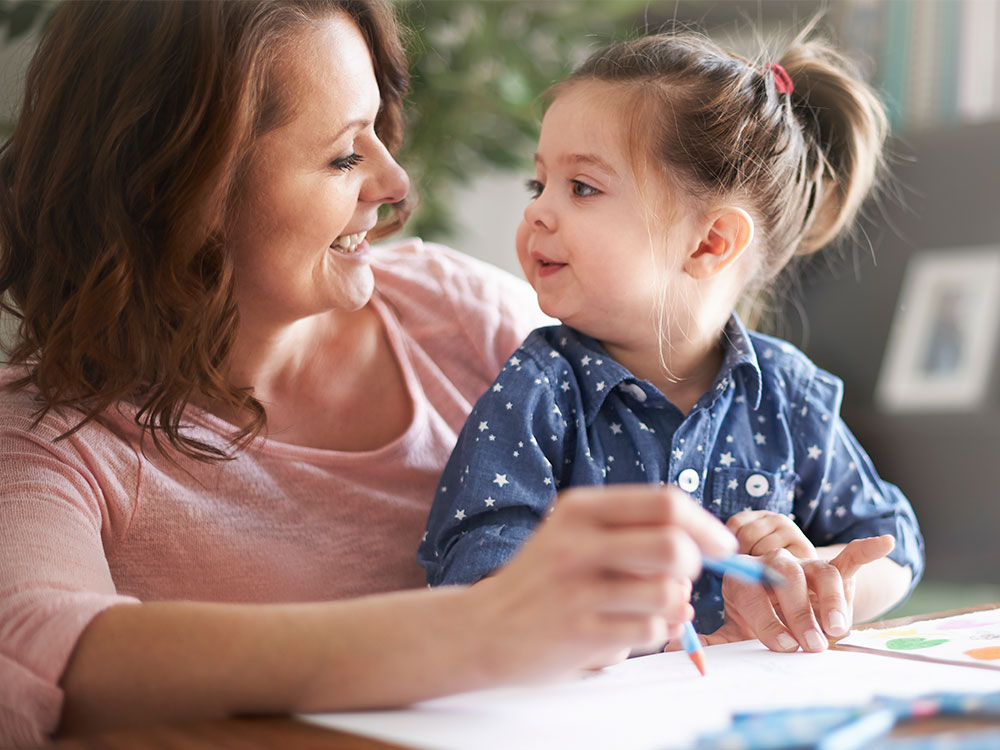Child Behavior Management
The Power of Listening: Active Communication with Kids
Advertisement
Dynamic Correspondence: Building Strong Connections
1. Encourage Understanding of One’s Core Capabilities
Newsletters provide children with a refuge to express their feelings, thoughts, and concerns. By listening effectively, parents can identify with their children’s emotions and help them develop the ability to deeply understand others. This deep mindfulness provides young people with the essential skills to truly explore social collaboration and connection.
2. Strengthen the Bond between Guardians and Children
When parents participate in dynamic communication, they show genuine interest in their children’s lives. This contribution creates confidence that everything is going well and strengthens the parent-child relationship. When children feel valued and understood, they will trust their guardians, seek guidance, and offer up their experiences.
3. Increase Trust
Undivided attention contributes to a child’s self-confidence and self-esteem. When parents pay close attention to their children, it sends the message that their thoughts and ideas matter. This validation increases a positive mental self-portrait, allowing the child to express themselves in different situations without hesitation.
4. Create Viable Relationship Opportunities
The child progresses through visual demonstrations, and dynamic correspondence serves as a model for successful correspondence. Through undivided attention and intentional dialogue in the family, children develop fundamental interpersonal skills, including empathy, perseverance, and the ability to express their ideas clearly.
5. Resolve Conflicts Calmly
Dynamic communication requires silent compromise. When parents listen effectively, they understand their children’s perspective, allowing them to resolve mistakes and conflicts with compassion and understanding. This approach supports open discussion and promotes the joint achievement of good goals.
Common Sense Approach to Dynamic Correspondence:
1. Always Available
When communicating with your child, do not interrupt and focus your full attention on the conversation. Put your electronics aside, stay connected, and communicate verbally and nonverbally that you’re totally stuck. Children are enthusiastic; they can detect when you are actually present.
2. Practice Sympathetic Regulation
Compassionate listening involves listening to words and understanding the feelings and goals behind them. Think about your child’s feelings and identify with what he or she is going through. Use phrases like “I understand why you feel the way you do” or “It looks like you’ve had a rough day.”
3. Ask Humble Questions
Encourage your children to share their thoughts by asking modest questions. These questions cannot be answered with a simple yes or no, nor can they support a detailed explanation. For example, instead of asking, “Did you have a great day at school?”, you can ask, “What was the most amazing thing about your day?”
4. Be Patient and don’t Judge
Give your children the opportunity to express themselves without interrupting or rushing. Avoid judging or examining their emotions or feelings. A non-judgmental approach creates an environment where your child feels safe to share their thoughts directly.
5. Express Appreciation and Recognition
Appreciate your child’s willingness to share his thoughts and feelings. Regardless of whether you are competing with them, acknowledge their position and agree with their feelings. This recognition increases their self-esteem and supports further communication.
6. Encourage Expression Skills through Crafts and Play
Younger children often find it easier to express their ideas through crafts, games, or stories. Open doors for creative expression, which can serve as a channel for communication. Ask them to draw or represent their emotions, and then check their performance together.
Conclusion:
Dynamic communication is an extraordinary tool that allows parents to communicate with their children to a great extent. By encouraging and creating an ongoing atmosphere in which children feel appreciated and respected, guardians lay the foundation for good connections and deep flourishing. The ability to listen effectively and speak with compassion gives children the fundamental skills to explore difficulties, make good connections, and succeed in various aspects of life.
Integrating dynamic communication into regular collaboration strengthens the parent-child relationship and improves children’s ability to develop personal insights, self-confidence, and communication skills. When guardians invest time and energy in improving their ability to concentrate, they are prepared for meaningful discussions, shared understanding, and lasting connections. The power of listening lies in the words communicated and the significant impact this can have on maintaining happy, confident, and strong children.
FAQs:
1. Why is active communication important for child development?
Positive communication can develop emotional intelligence, strengthen relationships between parents and children, boost self-esteem, and equip children with effective communication skills. It provides children with a safe space to express their emotions and ideas, laying the foundation for healthy social interactions.
2. How does positive communication increase children’s self-esteem?
When parents actively communicate, they validate their children’s feelings and perspectives. This validation helps build a positive self-image and increases the child’s self-confidence and self-esteem. The feeling of being heard and understood promotes strong self-esteem.
3. Can proactive communication help resolve conflicts with children?
Yes, positive communication is crucial for peaceful resolution of conflicts. Through active listening, parents can develop a deeper understanding of their children’s perspectives, allowing them to resolve misunderstandings and conflicts with empathy. This approach encourages an open dialogue that leads to a mutually satisfactory solution.
4. How can parents encourage their children to express themselves through active communication?
Parents can encourage children to express themselves by being present, listening empathetically, asking open-ended questions, being patient and non-judgmental, and showing appreciation for their children’s thoughts and feelings. Providing a supportive environment and allowing creative expression through art and play also facilitates positive communication.
5. Is proactive communication suitable for children of all ages?
Yes, positive communication is good for children of all ages, from toddlers to teens. These approaches may vary depending on the child’s stage of development, but the basic principles of attentive listening, empathy and respect remain the same. Adjust communication strategies based on children’s age and maturity to ensure effective communication across different age groups.
Trending Topics

Choosing the Right Credit Card: Your Complete Guide
Unlock financial freedom with the perfect credit card for your lifestyle! Explore our guide to choosing a credit card wisely.
Keep Reading
Mission Lane Visa® Credit Card Review: build credit fast
Discover if the Mission Lane Visa® Credit Card is for you in this review! Build credit fast - simple application process!
Keep ReadingYou may also like

Chase Freedom Unlimited® Review: Up to 5% Cashback
Discover the financial power in your hands with Chase Freedom Unlimited®! Enjoy the best in rewards with our credit card.
Keep Reading

